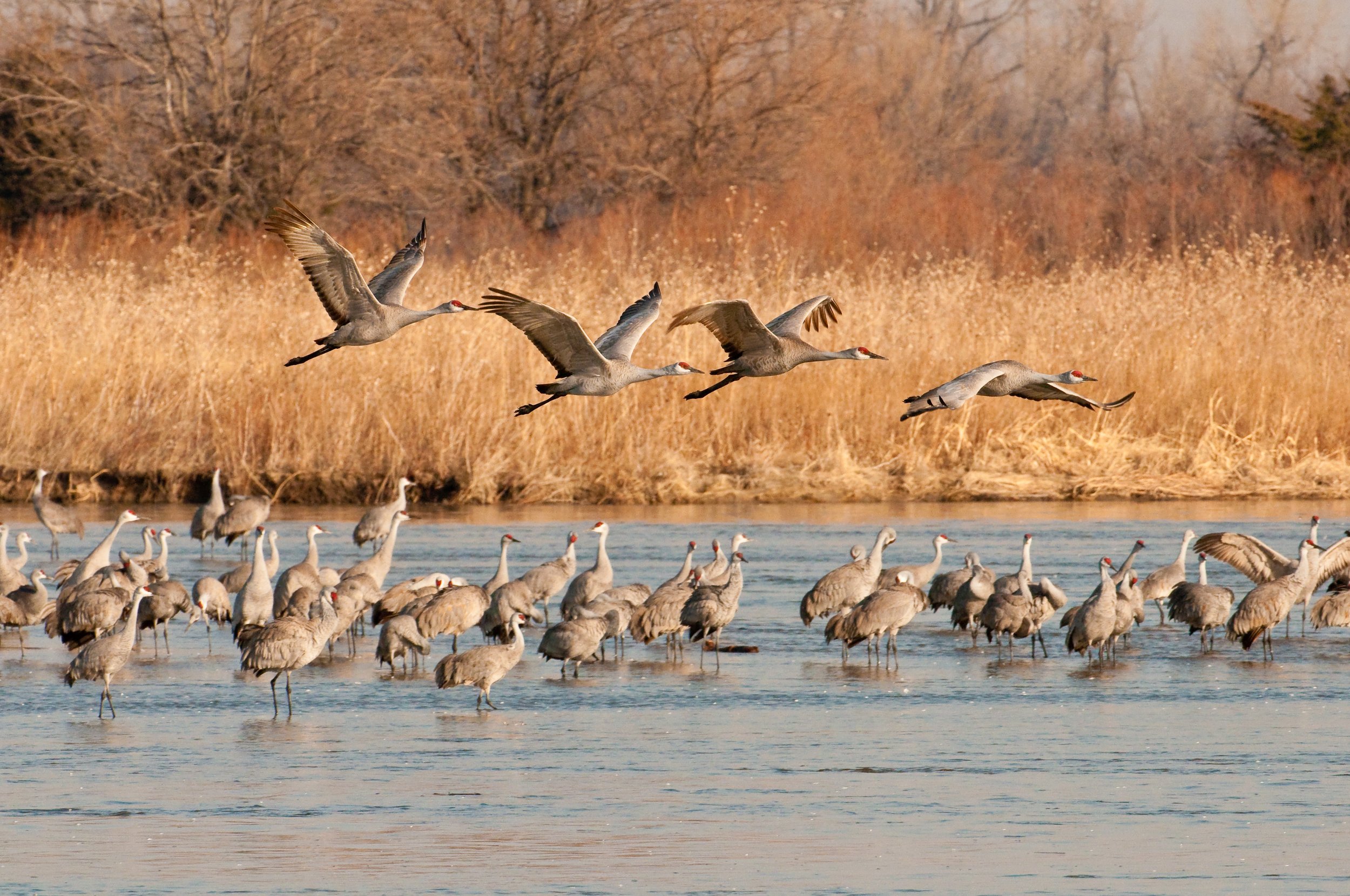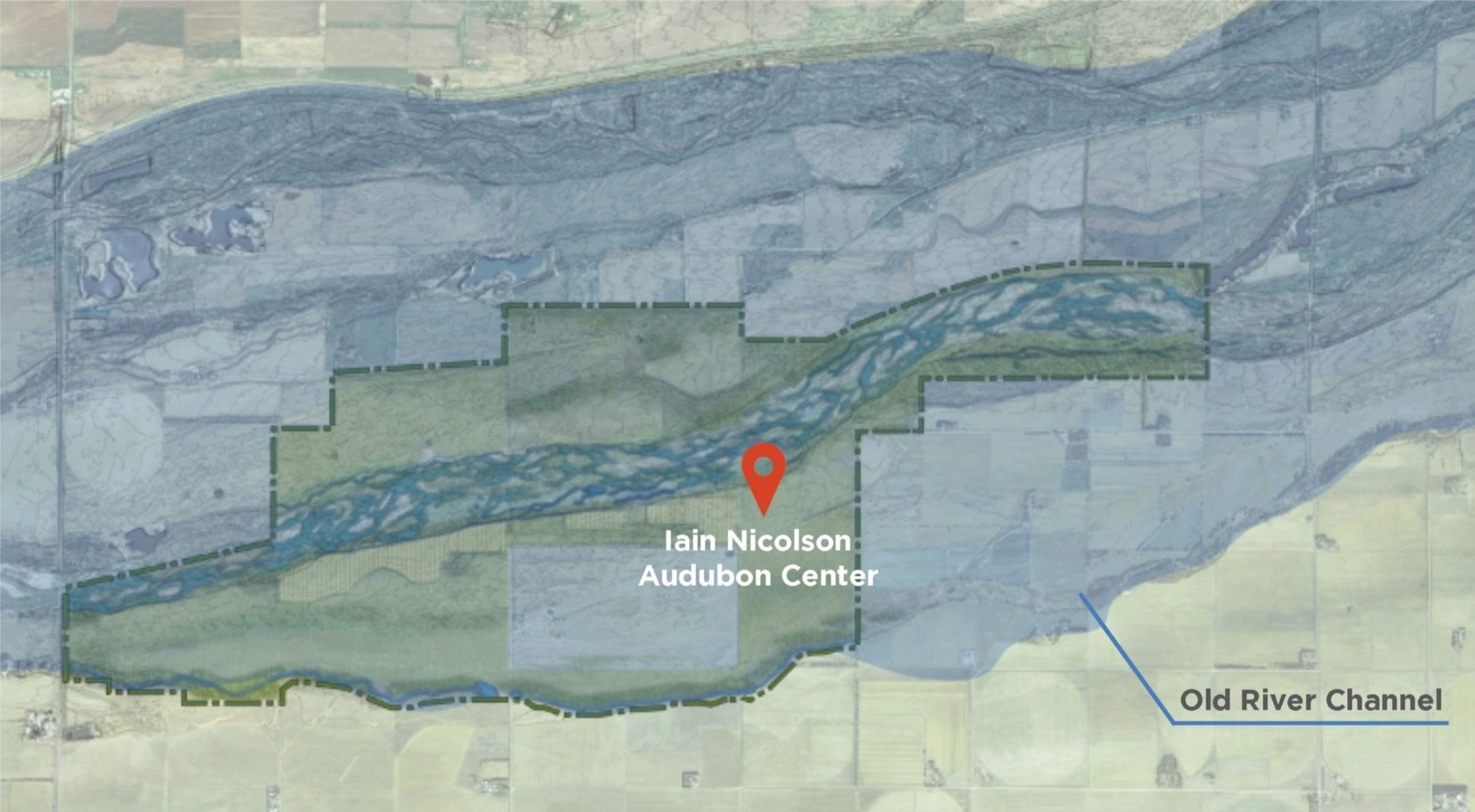“On motionless wing they emerge from the lifting mists, sweep a final arc of sky, and settle in clangorous descending spirals to their feeding grounds. A new day has begun on the crane marsh.” ― Aldo Leopold, A Sand County Almanac
For the past eight years, Studio Outside has partnered with the Iain Nicolson Audubon Center at Rowe Sanctuary in Central Nebraska, leading conservation efforts to protect and restore Platte River ecologies. This quiet prairie river hosts one of North America’s last remaining Sandhill Crane migration spectacles and Studio Outside has had the privilege of spearheading three different but connected projects for this delicate ecosystem and its stewards.
Flying north
Left: Libby Arterburn; Center: Tary Arterburn; Right: Mia Baker
In mid-March, three Outsiders traveled to the Rowe Sanctuary to witness the majestic bird migration firsthand. Part research, part fun — Mia, Tary, and Libby went out in 30-degree weather for a 6 AM reservation in the bird blinds. Before viewing the Cranes, visitors had to view an informational video on proper conduct and expectations. They were then led to a Discovery Station where only red lights were allowed so as not to disturb the birds. They were told to “walk like a deer” to shuffle in a way that would not bother nearby nesting cranes. By about 6:45 AM they were getting settled into the viewing blind.


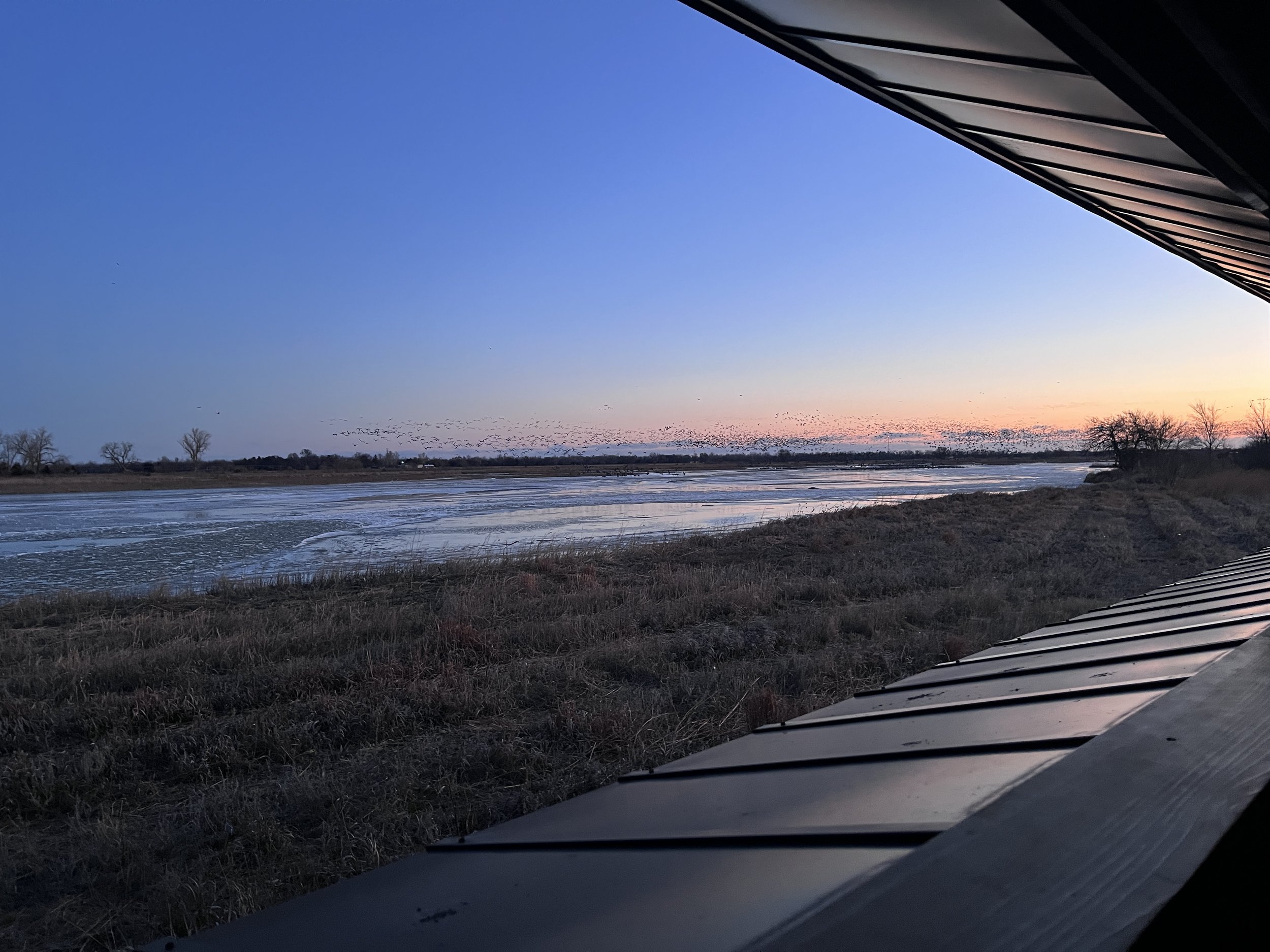
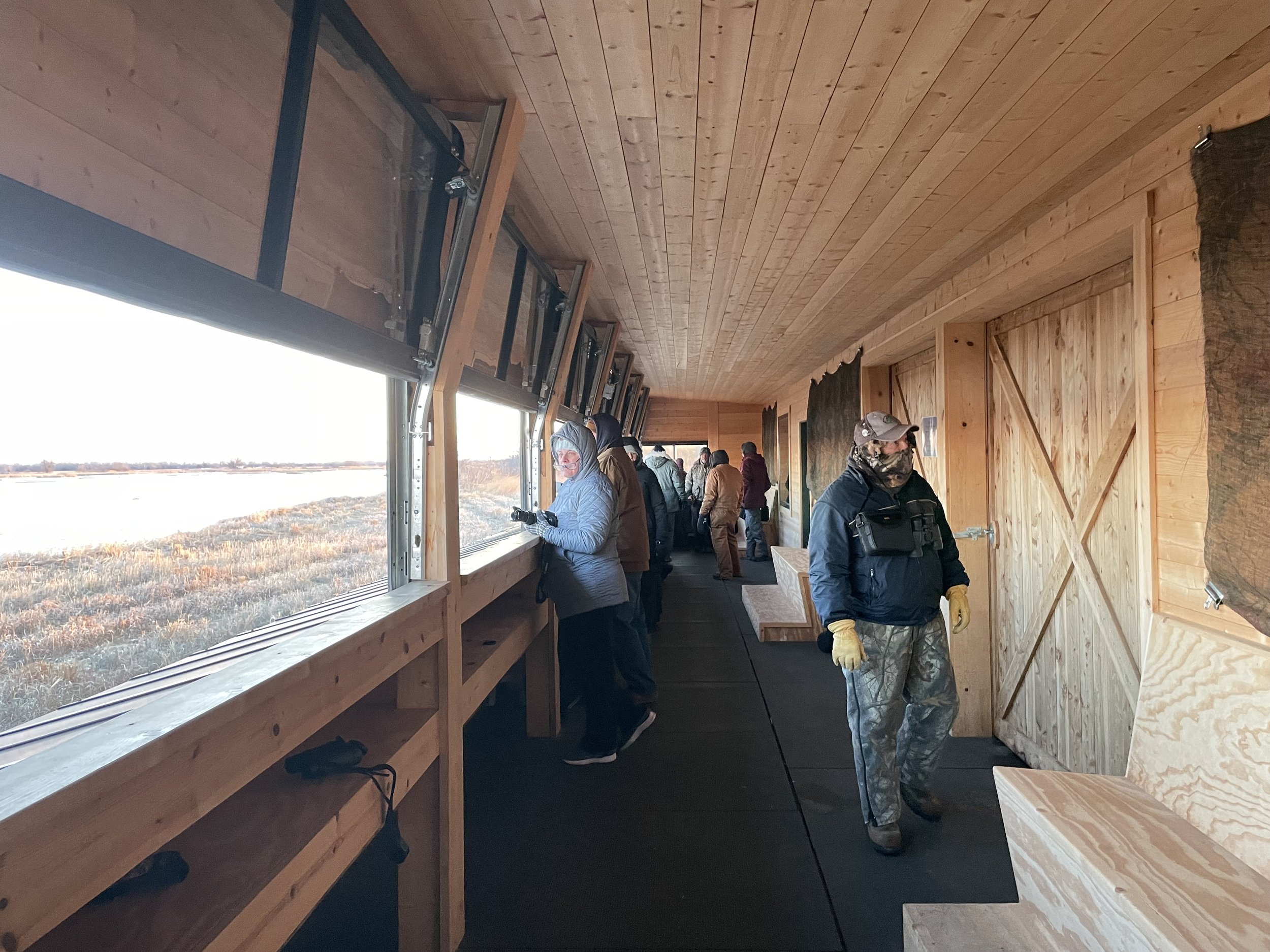
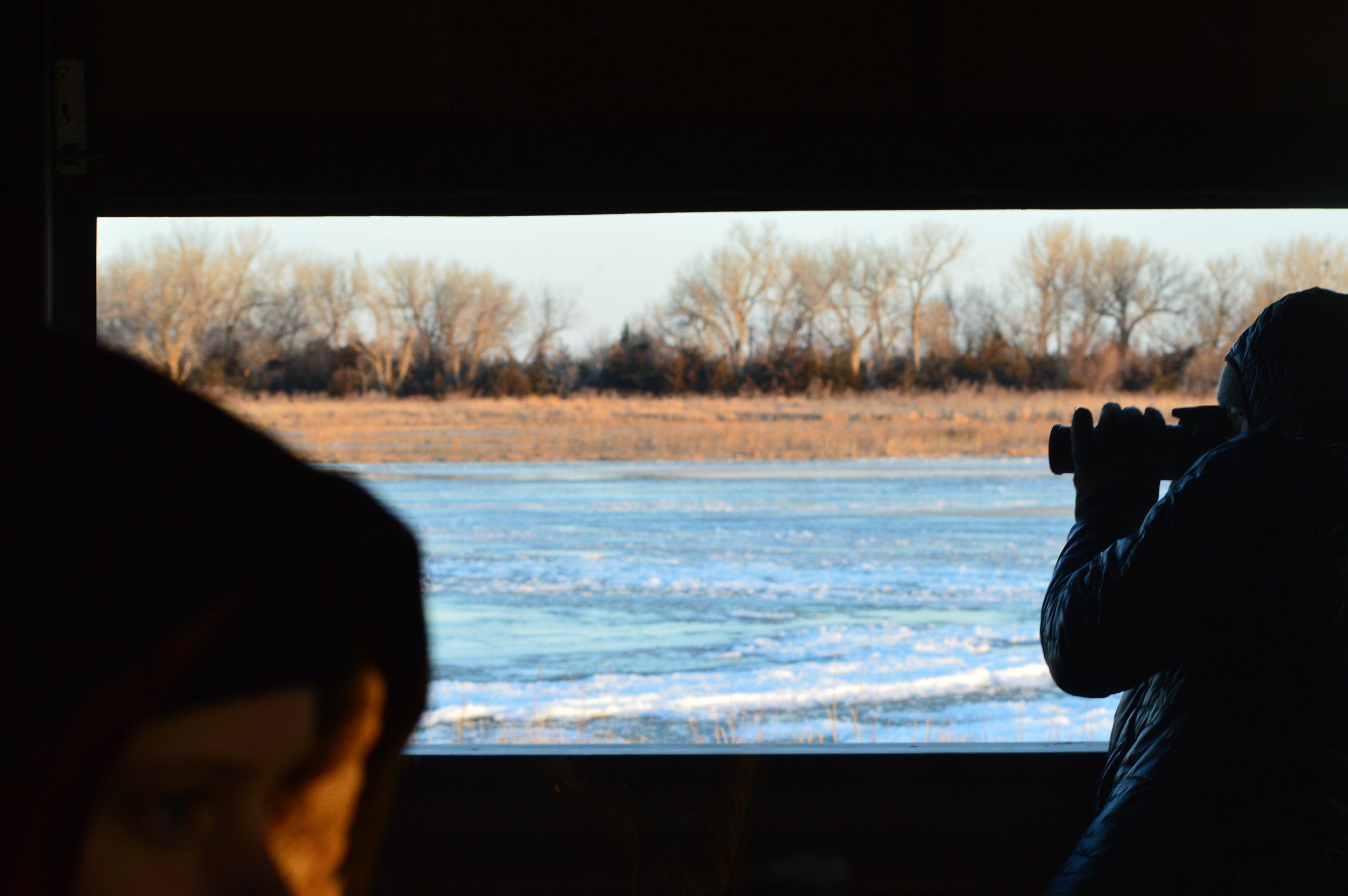
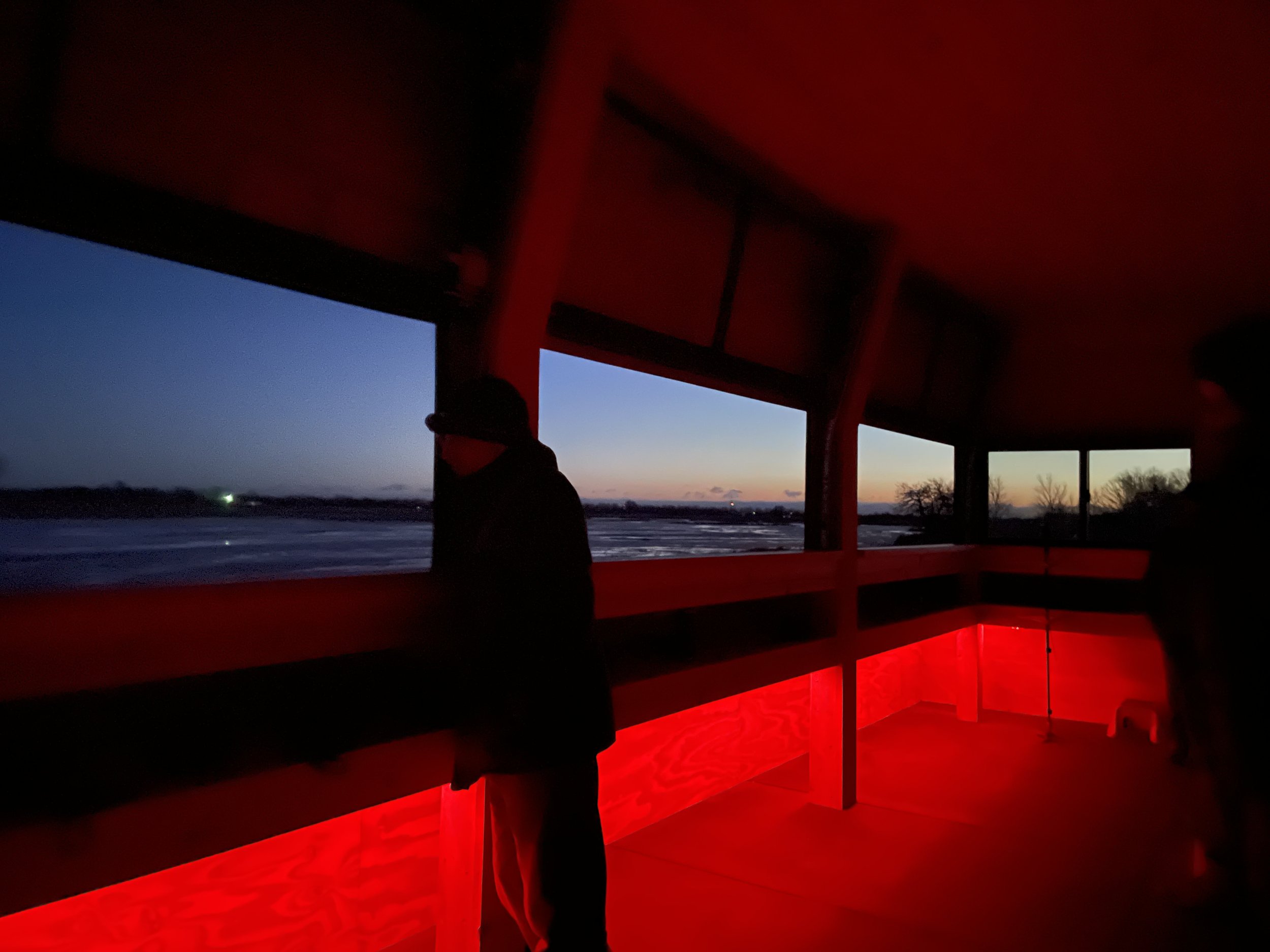
To bear witness to the Sandhill Crane migration along the Platte River is to have a spiritual experience. Every year, over a million Sandhill Cranes descend on the river within a six-week span, with over a quarter of a million birds present at any one time. They sleep in the river at night, leaving the marsh during the day to search for food in nearby fields. They eat as much as 20 percent of their body weight during their short stay in Nebraska. At dusk and dawn, the birds put on a show. They are often heard before they’re seen - their birdsong is described as “a long, rolling trumpet sound.” Cranes in search of a mate put on elaborate dances. They stretch their wings, pump their heads, bow, and leap into the air in a graceful and energetic dance to attract a partner. When they do find a companion, cranes mate for life.
The magic of this show is largely in knowing these birds have been making this same trip since before indigenous people walked the Great Plains. It is thought that cranes are the oldest known surviving bird on Earth, with a crane fossil found in Nebraska estimated to be 10 million years old. This convergence of cranes is not a happenstance, it was written into their spirits millennia ago. To glimpse this moment is to bear witness to our collective origin story.
“It was neat to look up at the mass of cranes and think about how they have been flying to the same 50 miles of river for thousands of years, generation after generation. It’s in their DNA. Reflecting on this idea was truly grounding. I remembered how small we are as little humans but also how impactful we can be collectively, for better or for worse.” – Mia Baker
A Migratory bird sanctuary
At this intersection of prairie river and migrating birds, Audubon is leading conservation efforts to protect and restore Platte River ecosystems. Our demands on this river have dramatically changed the habitat. The historic “mile-wide” tree-barren river flanked with wet meadows and prairie grasses is today only recaptured in small sections through the management efforts of Audubon and other conservation organizations, leaving most of the river now unusable for the cranes and many other native species.
Established as the first protected land for Sandhill Cranes on the Platte River in 1974, Audubon established the sanctuary through the purchase of 764 acres of habitat in and along the river. In those days, one part-time sanctuary manager and a handful of volunteers cleared river islands overgrown with tree seedlings with push mowers and hand sickles. In the spring, they led small groups of bird enthusiasts to view cranes on the river from behind strategically placed bales of straw.
Flash forward to today, and the Globally-Important Bird Area, now known as the Iain Nicolson Audubon Center at Rowe Sanctuary, is a world-renowned wildlife viewing destination. Audubon protects and manages more than 2,400 acres of habitat along the river, attracting an average of 20,000 visitors annually, many visiting during the spring crane migration.
designing for nature education
In 2015, Studio Outside partnered with the Iain Nicolson Audubon Center to develop a master plan for the Rowe property. Having acquired additional land, the organization realized the need for a long-term strategic master plan to guide future initiatives regarding site and facility investment. Through a week-long workshop, stakeholders identified a set of goals and a planning vision to serve as a framework to guide the next 50 years. Ultimately, three primary concepts informed the development of the physical master plan:
Preservation of the Resource: Habitat protection and restoration
Year-Round Destination: Broadening visitor opportunities to all seasons
Consolidation: A smaller central developed footprint
The site, broken into three zones, creates a gradient of development and preservation. Ranging from the Developed Core, an Interpretive Zone, and a Sanctuary/Preserve only open to guided tours.
Since the primary purpose of this center is to preserve the resource as a habitat for migratory birds, the Developed Core is the smallest zone and consists of the areas with the most foot traffic and highest levels of visitor use. Here visitors begin their educational journey. A prime crane-viewing spot, visitors can witness the majestic bird migration while also engaging with native habitat through interpretive signage. Practices such as pollinator plantings, native prairie plantings, invasive species management, use of bioswales in parking areas, and selective tree removal are all at play.
Interpretive Zones prioritize education and immersive experiences. Trails lead to wildlife-viewing blinds and beyond, bringing visitors out into the landscape to experience woodland, prairie, and water habitats. The signature experience at Iain Nicolson Audubon Center is the evening or morning crane viewing excursion to one of the wildlife blinds on the Platte River. The design of new Discovery Stations in 2018 brought about opportunities to expand to year-round programming. The architecture of these new structures had to be nimble yet weather tight. Temperatures are often below freezing during the 6-weeks of nesting, and changing river levels can cause the birds to choose new roost points each season. The four Discovery Stations designed by Lake Flato Architects enable the Rowe Center to expand its offerings and welcome visitors from around the world as birds and people alike flock to this sanctuary on the prairie.
Least-developed, yet carefully managed, the Sanctuary/Preserve zone consists of 1800 acres of land devoted to wildlife habitat. Trails and built structures are nowhere to be found here, but back-country guided tours lead visitors through the grasses. Although the landscape in Central Nebraska is largely flat, a mere 12-inch change in elevation near the Platte River can signify the presence of an entirely different plant community. A transect across the historic mile-wide riverbed reveals a nuanced topography. Dry prairie turns to wet meadow, then transitions to riparian wetland before becoming the Platte River. Beyond the boundaries of the Habitat Sanctuary agricultural land spreads to the horizon. While the overly cultivated farmland appears in stark contrast to the native wilderness of the Rowe Center, this relationship plays an important role in the migratory bird flight path. The cranes seek the waste corn and agricultural spoils as a food source during their stay here each spring. Audubon maintenance practices such as a rotation of haying strategy, resting, and prescribed burns foster the spring crane habitat while also serving as an interpretive program devised to teach visitors about the year-round life cycle of the land and how those agricultural practices create the setting for the spring migration phenomenon to occur.
Shortly after publishing the Master Plan, the Iain Nicolson Audubon Center was ready to move forward with construction. In 2016, Studio Outside began looking at how to make this vision a built reality. A site plan for the Developed Core area explored locations for pedestrian paths and vehicular access. Construction of the full master plan is expected to start in May 2023, at the end of the year’s bird migration season.
“Seeing the sandhill crane migration along the frozen Platte reminded me of how delicate but resilient our interconnected systems really are… Since I have been recently working on the construction documentation for the Iain Nicholson re-design project, it was exciting to experience the reason why Rowe Sanctuary exists, and the reason for expansion and re-design.” – Mia Baker


